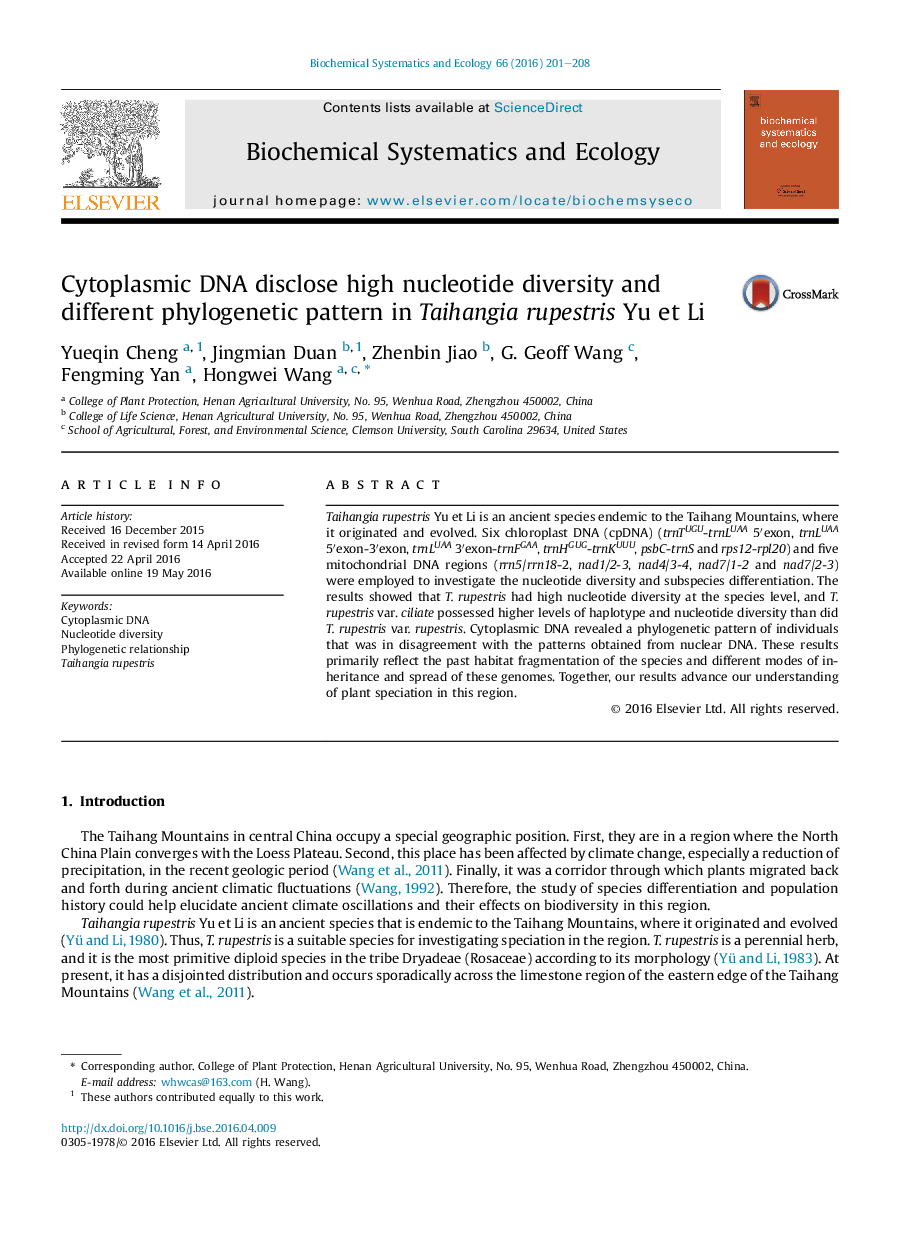| Article ID | Journal | Published Year | Pages | File Type |
|---|---|---|---|---|
| 1353757 | Biochemical Systematics and Ecology | 2016 | 8 Pages |
•Taihangia rupestris had high nucleotide diversity at the species level.•Cytoplasmic DNA revealed a different phylogenetic pattern of individuals.•T. rupestris underwent past habitat fragmentation.
Taihangia rupestris Yu et Li is an ancient species endemic to the Taihang Mountains, where it originated and evolved. Six chloroplast DNA (cpDNA) (trnTUGU-trnLUAA 5′exon, trnLUAA 5′exon-3′exon, trnLUAA 3′exon-trnFGAA, trnHGUG-trnKUUU, psbC-trnS and rps12-rpl20) and five mitochondrial DNA regions (rrn5/rrn18-2, nad1/2-3, nad4/3-4, nad7/1-2 and nad7/2-3) were employed to investigate the nucleotide diversity and subspecies differentiation. The results showed that T. rupestris had high nucleotide diversity at the species level, and T. rupestris var. ciliate possessed higher levels of haplotype and nucleotide diversity than did T. rupestris var. rupestris. Cytoplasmic DNA revealed a phylogenetic pattern of individuals that was in disagreement with the patterns obtained from nuclear DNA. These results primarily reflect the past habitat fragmentation of the species and different modes of inheritance and spread of these genomes. Together, our results advance our understanding of plant speciation in this region.
